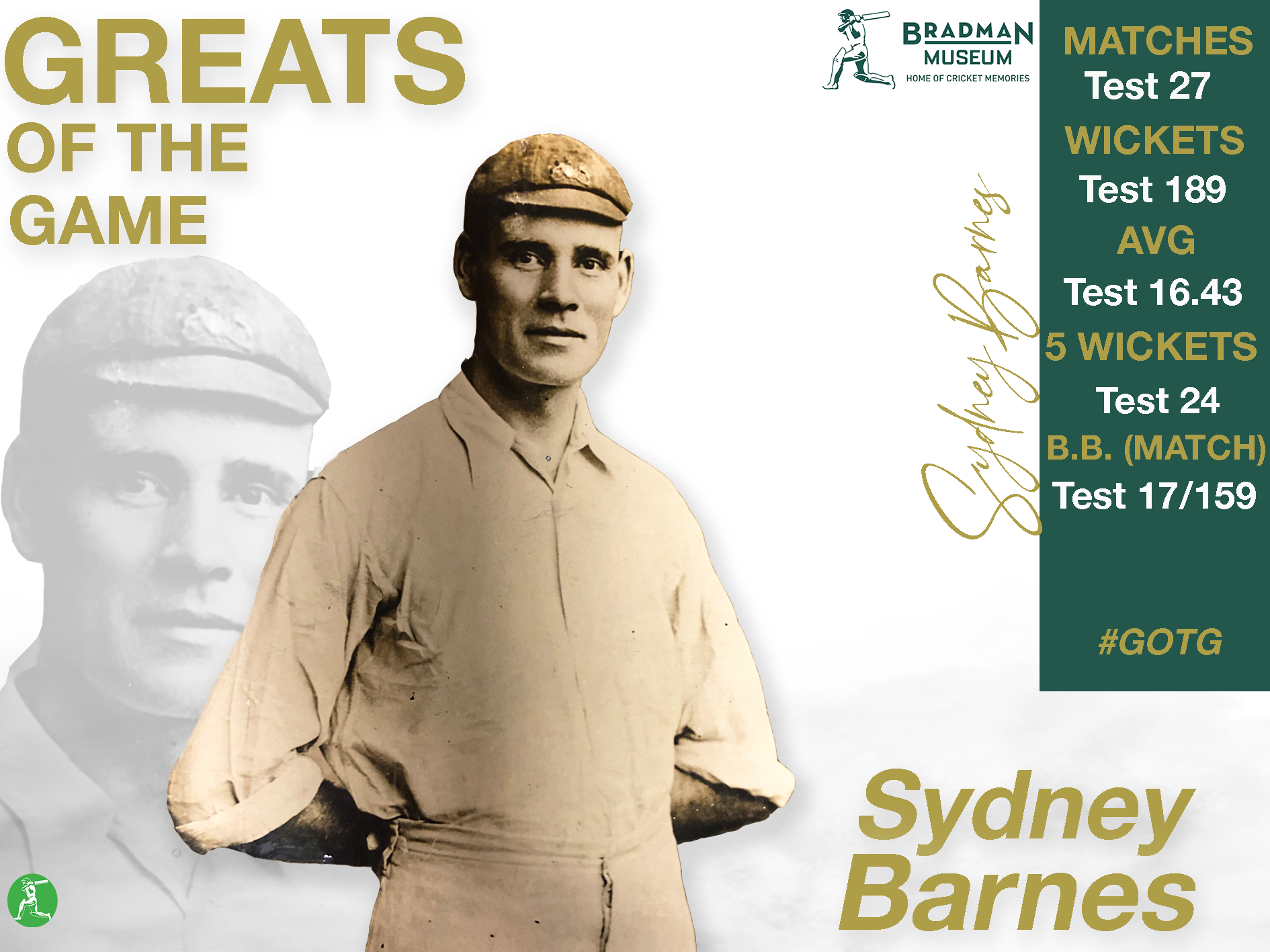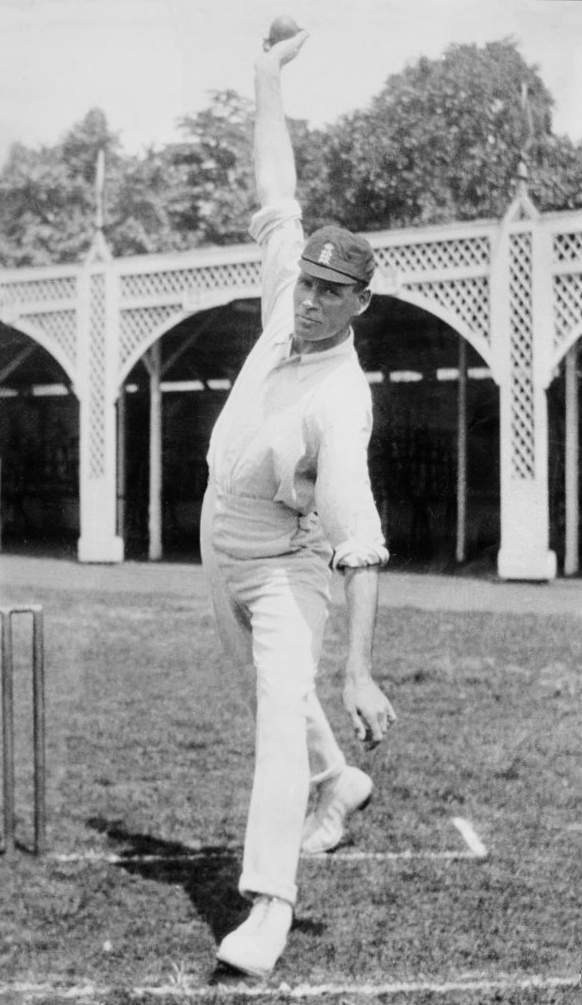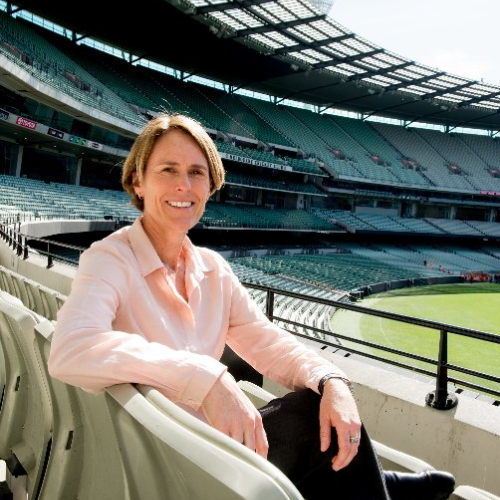England
Bowler
D.O.B: 19/04/1873
International Career: 1901 – 1914
“He was the greatest bowler who ever lived.” – Richie Benaud

With an astounding record, Barnes is GOTG no. 7
Unique in every way, Sydney Barnes is one of cricket’s most intriguing figures. More than a hundred years after his final Test, he also remains one of its most successful – widely regarded by all of his era, and many since – as the game’s finest ever bowler.
The second of five children, Barnes was never forced into cricket. His father, not particularly enamoured of cricket, focussed his attention on work rather than sport, meaning Sydney came to cricket organically. In his early years, Barnes practiced assiduously and has proudly proclaimed that he never had more than three hours’ coaching as a youngster. Perhaps therein lay his strength, for throughout his career, he bowled like no other player in history.
A tall man with a stylish and economical approach to the wicket, Barnes was endlessly creative, with a unique armoury that confounded all those who stood twenty-two yards away. A fast-medium pacer, Barnes broke the mould of those who came before him, by combining elements of spin – or fast cutters – with more traditional swinging deliveries. Broadcaster and writer, Benny Green recalls that Barnes effectively achieved “the great dream of every bowler,” namely, “the ability to deliver an accurate leg-break at true pace.”
With an unparalleled skill set, Barnes quickly earned acclaim in the minor Lancashire leagues and, more to the point, he truly enjoyed playing at the lower levels. Sir Neville Cardus highlighted that he “preferred the reward and comparative indolence of Saturday league matches to the daily toil of the county tourney.” So, it was from relative obscurity that he was plucked to play for England in 1901 – a chance net where he peppered the skipper, A.C. MacLaren – all that was required to confirm his spot on the upcoming tour to Australia.
Imbued with unwavering self-belief, Barnes took to international cricket with relative ease. Claiming 5/65 in the first innings of his first Test, including the major scalps of Trumper Hill and Darling. Ten years later in Melbourne, Barnes claimed Hill yet again, in an opening spell where the Englishman claimed an astonishing 5 wickets for 6 runs. Hill observed afterwards that, “the ball pitched outside my leg-stump, safe to push off may pads, I thought. Before I could ‘pick up’ my bat, my off-stump was knocked silly.” Clem’s was a universal experience for batsmen of the era; confounding, as Cardus articulated, “even the most princely of batsmen,” en route to 189 wickets from just 27 Tests.

With an upright bowling action, Barnes terrorised batsmen for many years
A fine bowler, Barnes was also, as Mike Selvey records, “a cantankerous man.” Ahead of his time, Barnes felt that he ought to be paid well for his exploits on the field. A belief he held strongly, it led him to disagreements with the establishment and contributed to the disjointed nature of his professional career; he oscillated in and out of First-Class cricket after his Test debut, as petty disputes would see him prefer to return to League cricket. Ultimately, however, his on-field exploits proved irresistible and the England side was immeasurably stronger when he was in it. Incidentally, he was enabled by the comparative lack of professional cricket that he played; retaining a level of vitality and youth that deserts most bowlers. Playing in the Leagues until he was 61, Barnes’ record of 3,741 wickets at 6.68 over 38 years is quite simply mind-boggling.
Relentless on the field, Barnes was universally admired by his contemporaries and feared by the batsmen who had to face him. With an incomparable record, he will forever be celebrated as one of cricket’s best bowlers.
BY THE NUMBERS

Join the cricket network to promote your business and expertise. Make it easy for people to search and find the people and services they need through people they know and trust.
Join the network







